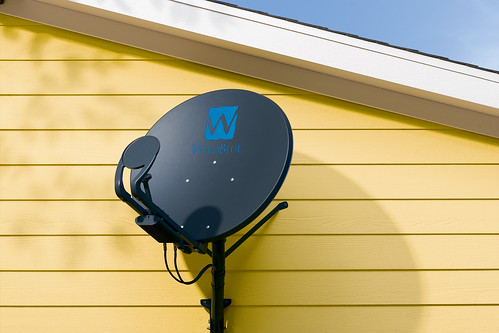WBMSAT News Bits for October 9, 2009
Friday, October 9th, 2009
Satellite Holdings changes name of Raven Group to Skyware Global.
[SatNews – 10/09/2009]

DigitalGlobe WorldView-2 satellite successfully launched from Vandenberg AFB, California.
[SatNews – 10/08/2009}
Viasat receives $46M contract from Star Satellite Communications Company, a subsidiary of Yahsat, for network infrastructure and customer premise terminals for new high-speed internet service in Middle East, Africa, and Southwest Asia.
[socalTECH – 10/08/2009]
Lunar Crater Observation and Sensing Satellite to image impact of its empty upper stage before the satellite also crashes into the moon; studies of plume of gas and dust may confirm presence of ice.
[SatNews – 10/08/2009]
SpeedCast and Eutelsat expand coverage of their maritime solution across the Atlantic Ocean and the Americas.
[Satellite Today – 10/08/2009]
Omnicity Corp signs agreement with StarBand Communications to offer StarBand satellite high speed internet service in Omnicity markets throughout the U.S.
[SatNews – 10/08/2009]
KT Corporation signs multi-year pre-launch contract for capacity on Intelsat 17 satellite to be launched in 2011, to deliver enhanced broadband VSAT services in Asia, Africa, and Middle East.
[SatNews – 10/08/2009]
TDM Satellite Channel, Macau, begins free to air broadcasting on newly launched AsiaSat 5 satellite serving more than 50 countries in Asia Pacific.
[SatNews – 10/08/2009]
Inmarsat and Vizada donate 70 BGAN terminals to ITU in agreement to improve emergency communications for disaster preparedness and coordinate relief activities.
[SatNews – 10/08/2009]
RapidEye supplies German company EOMAP with satellite imagery to support mapping services for oil spill monitoring in Australia.
[SatNews – 10/08/2009]
UTV signs contract for capacity on MEASAT-3a for carriage of UTV Movies.
[SatNews – 10/08/2009]
Cable & Wireless Panama chooses Gilat to provide SkyEdge II high-performance network to deliver broadband internet to hundreds of schools in remote areas nationwide.
[SatNews – 10/08/2009]
Eutelsat adds 100th HD channel with Sky Sport 1HD.
[hd-report – 10/07/2009]
Satellite and Telco TV services beat Cable on J.D. Power customer satisfaction survey.
[Multichannel News – 10/07/2009]
ExactEarth, subsidiary of COM DEV International, successfully uses NanoSat Automatic Identification System technology to help Canadian Forces monitor illegal fishing activity in Pacific.
[SatNews – 10/07/2009]
Iridium is staging a comeback, goes public 10 years after chapter 11 bankruptcy; can Pentagon demand and other niche services including hosted payload keep it going as it faces satellite replacement requirements?
[BusinessWeek – 10/06/2009]
ORBCOMM and Sierra Wireless enter agreement to integrate Sierra Wireless’s M2M services platform within ORBCOMM’s satellite web services portal.
[TMCnet – 10/05/2009]
Harris subsidiary Maritime Communication Services launches iDirect Evolution network to support broadband IP services for its maritime customer Carnival Corporation.
[PRNewswire – 10/06/2009]
China’s late September announcements that it will build and launch communications satellites for Bolivia and Laos may be followed by plans to build satellites for Ecuador, Myanmar, and Vietnam, as well as some African countries.
[AsiaTimes – 10/07/2009]
Iran claims plans to launch astronauts into space in future.
[SatNews – 10/05/2009]
NSR free webinar will discuss the coming surge in launches of satellites for the mobile satellite services sector – three LEO constellations totaling 128 satellites and another 23 MEO and GEO satellites could be launched in next six years – market demand equation will tilt strongly toward supply side.
[NSR free webinar – October 20, 2009]
WBMSAT PS – Satellite Communications Consulting Services












